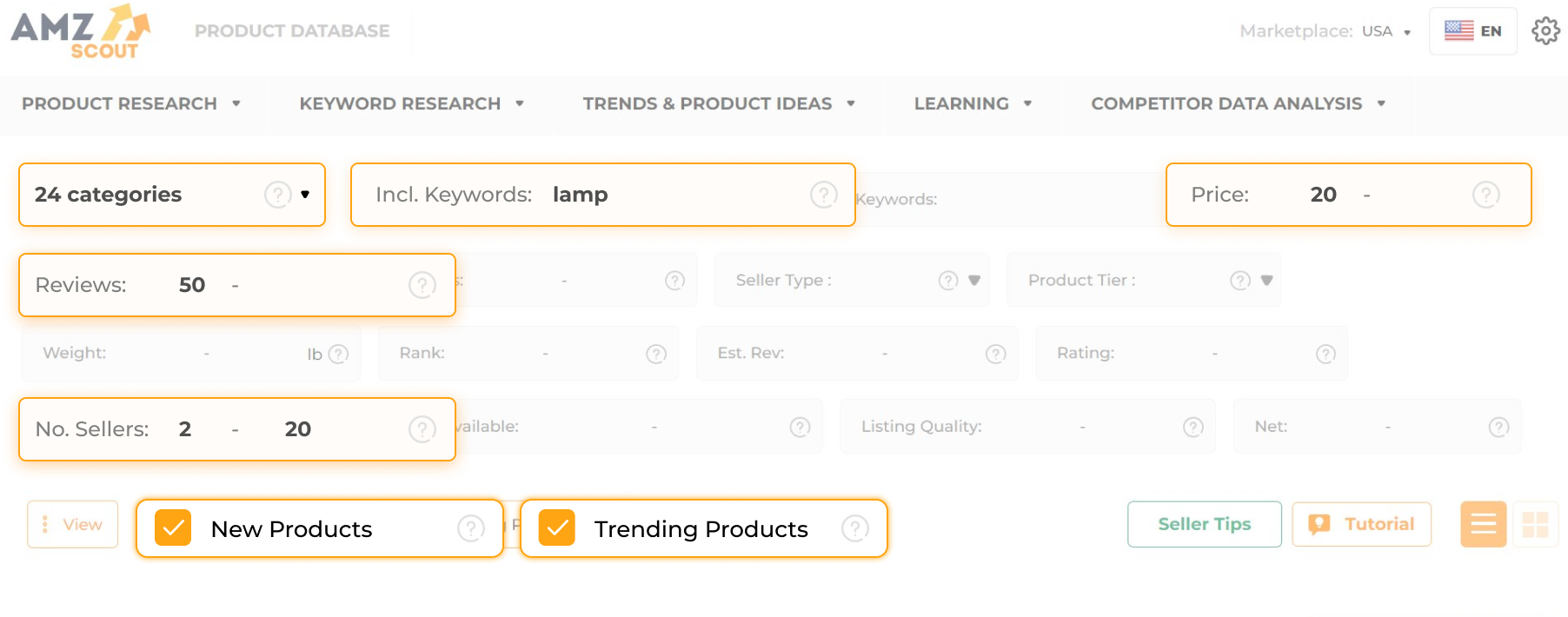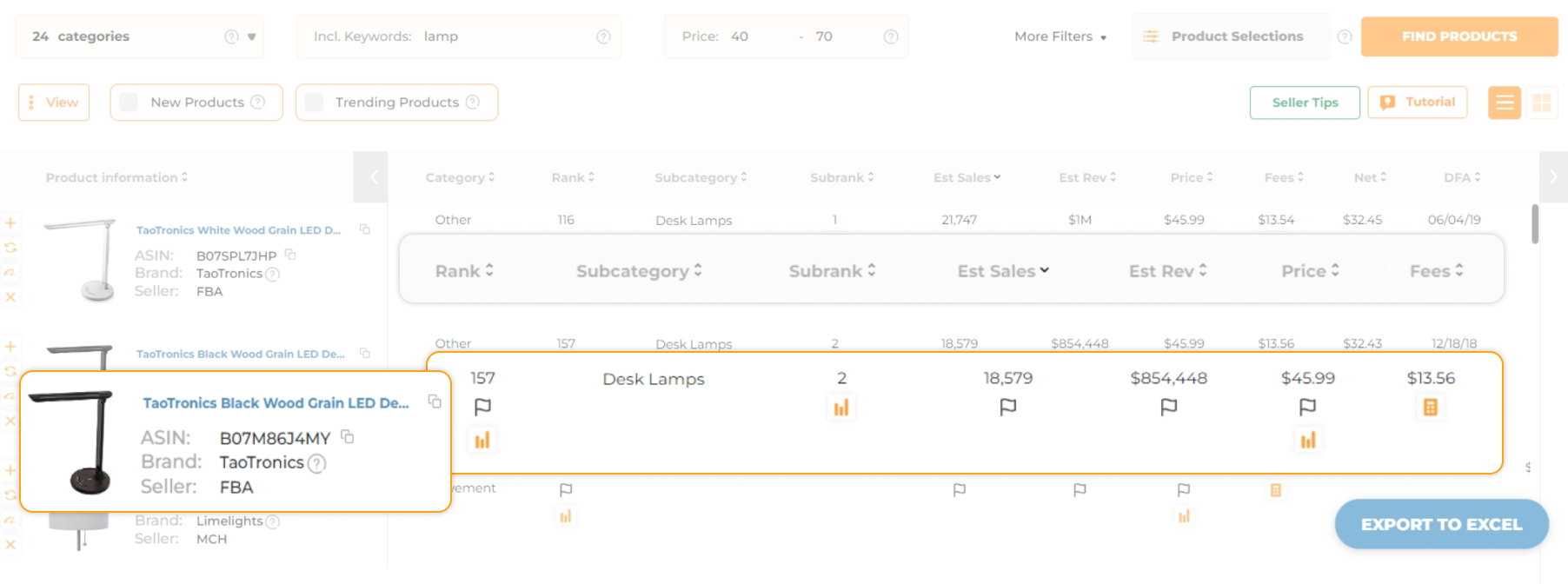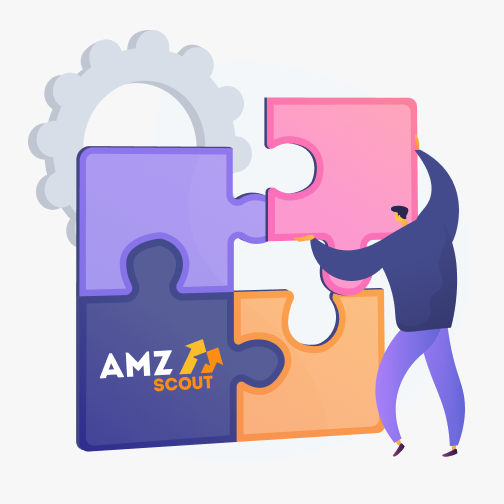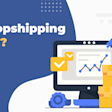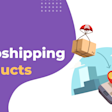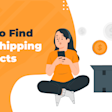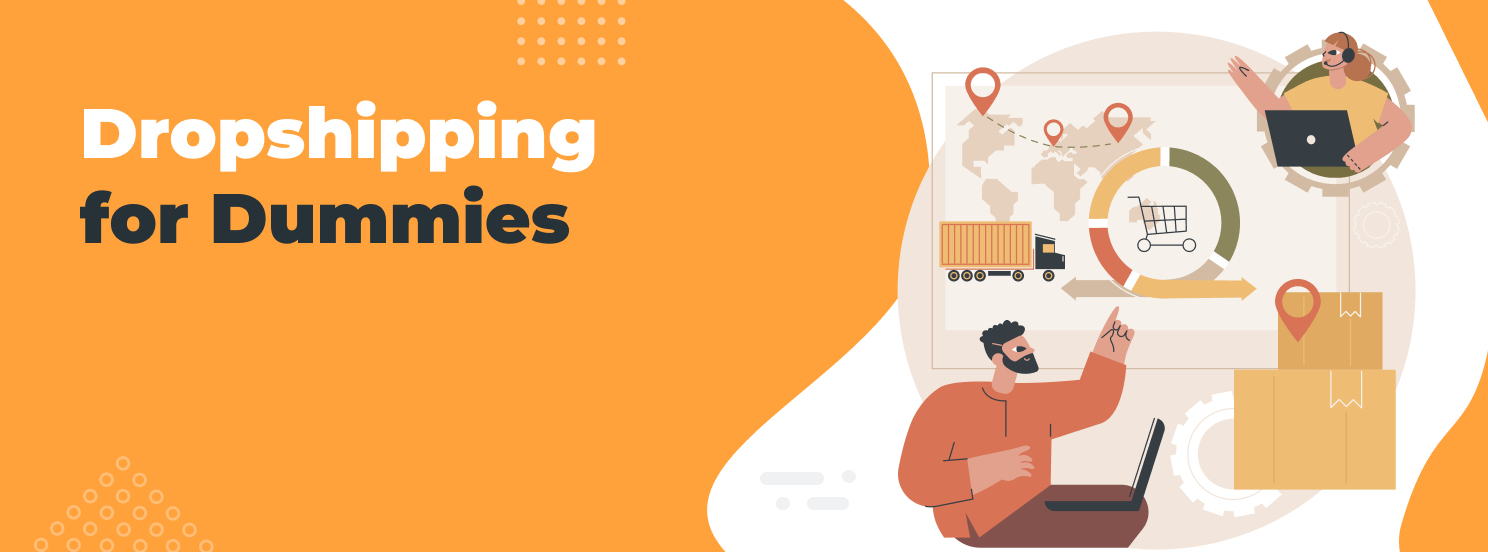
The Beginner’s Guide to Dropshipping in 2025: Simple Steps to Start
Want to start an online business without handling products yourself? Dropshipping for dummies makes that possible. In simple terms, it’s a way to sell items online while a supplier takes care of inventory, packing, and shipping. It’s low-risk, beginner-friendly, and still one of the best ways to become a successful entrepreneur in 2025.
In this step-by-step tutorial, we’ll have explained what dropshipping is, how it works, and why it’s a smart business model for beginners. Whether you're looking for easy dropshipping ideas or tips on how to start with no money, we’ll cover all the basics to help you get started today.
Table of contents
What Is Dropshipping and How Does It Work?
Dropshipping is a simple e-commerce model where you sell products online without ever touching the inventory. Instead of buying and storing items upfront, you list things in your online store, and when a customer places an order, a third-party company ships it directly to them. No warehouses, no packing tape, just a streamlined process that makes starting a business easy, even with no money.
Unlike traditional e-commerce, where you need to buy stock in advance and handle shipping yourself, dropshipping lets beginners launch a store with minimal risk. It’s one of the best ways to get into online selling in 2025.
Why Dropshipping Is Still a Great Business Model in 2025?
With so many business trends coming and going, it’s fair to ask: is dropshipping still worth it in 2025? The answer is a clear yes. It remains one of the best ways for beginners to start an online business because it’s low-cost, low-risk, and incredibly flexible.
Here’s why dropshipping is still going strong:
Low startup costs: no need to buy inventory, rent a warehouse, or worry about shipping logistics
Test products and niches easily: quickly try new ideas without the risk of unsold stock
Scalable with automation tools: use apps and platforms to process orders, track shipping, and manage your store
Sell globally: reach customers worldwide from day one with just a laptop and an internet connection
Whether you're starting your first business or looking for an easy side hustle, dropshipping offers real advantages in 2025.
How to Start a Dropshipping Business in 2025 For Dummies
Starting a dropshipping business might sound intimidating at first, but it’s actually one of the easiest ways to break into e-commerce, especially for beginners. Below, we’ll walk you through the process in simple terms, with practical tips, tools, and steps to help you get started with confidence.
Step 1: Choose Your Niche and Products
Every great dropshipping venture starts with the right niche. Ask yourself:
What am I passionate about?
What do I know people are already searching for?
Is there room for growth or untapped demand?
To keep costs low while doing your research, use free tools like Google Trends, Exploding Topics, and the AMZScout Product Database (free trial available for Amazon-focused dropshippers).
Follow these quick steps with AMZScout:
Start a free trial and access the product database.
Use filters (like price, reviews, or category) to find potential products.
Explore the “Trending” and “New” sections for fresh, high-growth items.
Hit “Find Products” to generate results instantly.
This step is all about narrowing your focus and finding winning items, before you invest a dime.
Step 2: Research Your Competition
Once you’ve picked a niche, it’s time to check out who else is selling similar products and how they’re doing it. Analyzing your competition helps you spot what’s working, what’s missing, and how you can stand out.
Start with a few simple manual checks:
Search your product on Amazon, Google Shopping, or social media.
Look at top listings: What are their prices, photos, and customer reviews like?
Take note of how others position their brand. Are they solving a specific problem or tapping into a trend?
To dig deeper, try the AMZScout Dropshipping, Arbitrage, and Wholesale Extension for Chrome. This tool lets you view important seller data - such as whether a product is being dropshipped, who the competitors are, and how much they’re charging - directly on Amazon pages.
By understanding what other dropshippers are doing, you’ll be able to position your store more effectively and make smarter decisions about pricing, marketing, and product selection.
Step 3: Find a Reliable Supplier
Now that you know what you want to sell and who your competitors are, it’s time to find a supplier you can trust. This step is crucial, as your supplier manages the inventory, shipping, and part of the customer experience. A reliable partner makes all the difference between a smooth-running dropshipping business and one filled with headaches.
Some of the best platforms to source inventory include:
AliExpress: great for low-cost products and a wide selection
CJ Dropshipping: offers faster shipping and better branding options
Spocket: focuses on U.S. and EU suppliers for quicker delivery
Zendrop and SaleHoo: easy-to-use platforms with curated products for beginners
Before you commit, make sure to vet your supplier carefully. Here are a few tips for beginners:
Check reviews and ratings from other dropshippers
Send a sample order to test product quality and shipping speed
Contact them directly to test response time and communication style
Look for clear return and refund policies
Finding the right supplier is one of the best ways to build a reliable, professional store, especially if you're just learning how to start dropshipping in 2025. Take your time, compare options, and use this step-by-step guide to make smart choices early on.
Step 4: Set Up Your Online Store
Once you’ve locked in your products and supplier, it’s time to build your storefront - the digital home for your dropshipping enterprise. There are several platforms to choose from, each with its own pros, cons, and learning curves. Below, we break down the most beginner-friendly options so you can pick the best way to start selling online.
Shopify Often considered the gold standard for dropshippers, Shopify is an all-in-one e-commerce platform that’s easy to set up, even if you’re brand new to online business. You can choose from professional store templates, add apps for automation, and manage everything from one dashboard. It’s ideal for those who want to build a branded store from scratch.
Pros: Clean interface, great for beginners, tons of dropshipping integrations (like DSers, Spocket, or Oberlo alternatives) Cons: Monthly fees start around $39, and costs can add up with apps
WooCommerce (via WordPress) If you already have a WordPress site or want more control, WooCommerce is a flexible, open-source plugin that turns your site into a fully functional store. It’s free to start and highly customizable, but requires a bit more technical know-how. You can also integrate it directly with Amazon.
Pros: No monthly fees, full control over your store Cons: Requires hosting setup and plugin management, so less beginner-friendly
Amazon Want instant access to millions of customers? Dropshipping via Amazon lets you list items directly on the world’s largest marketplace. While it’s competitive and has stricter rules, tools like the AMZScout Product Database and their dropshipping extension can help you get started.
Pros: Massive traffic, trusted platform Cons: High competition, strict dropshipping policies, seller fees
TikTok Shop If your target audience lives on TikTok, this fast-growing platform could be your golden ticket. TikTok Shop allows you to sell products directly through videos and livestreams, blending content and commerce seamlessly. It’s perfect for trend-driven items and visual niches like beauty, gadgets, or fashion.
Pros: Built-in audience, viral product potential Cons: Still evolving, and success depends on content strategy
Each of these platforms offers a different path into dropshipping. Whether you want full customization, built-in traffic, or social-driven selling, the best platform is the one that fits your goals, skill level, and budget.
Step 5: Upload Products and Write Winning Listings
Now that your store is ready, it’s time to add products and craft listings that convert. A strong title and description help your items get found and sold. You should use clear, SEO-friendly titles (e.g., “Wireless Bluetooth Headphones – Noise Canceling, 40-Hour Battery”) and focus on benefits, not just features.
Keep descriptions short, scannable, and persuasive. Use keywords like “easy,” “best way,” or “affordable” to boost visibility. Check what top dropshippers in your niche are doing, then do it better.
Step 6: Set Up Payment, Shipping & Legal Basics
Before your first order rolls in, make sure the back end of your dropshipping business is ready to go. Set up trusted payment gateways like Stripe or PayPal so customers can check out with confidence.
Create a clear shipping and return policy: let buyers know how long shipping takes, what to expect, and how returns work. It builds trust and keeps your store looking legit.
And don’t forget the legal stuff: register your store and look into taxes. Quick tip: the rules vary, so check your local laws or consult a professional. It’s all part of building a real, lasting business.
Step 7: Launch and Start Marketing
Your store is live - now it’s time to drive traffic and start getting orders. You can use free methods like social media, email lists, and TikTok to share your products. Try influencer collabs or run TikTok ads to reach a bigger audience fast.
If you're selling on Amazon or Etsy, take advantage of their built-in search traffic for easy, organic discovery. Whether you're using paid or free tools, the best way to grow your dropshipping business is to get your products in front of the right people, early and often.
What Can You Sell with Dropshipping?
One of the biggest perks of dropshipping is the huge range of products you can sell without ever stocking inventory. Some of the most popular categories in 2025 include:
Home & garden - From clever under-sink organizers to minimalist wall décor, this category is booming as people continue to invest in making their living spaces more functional and stylish. Eco-friendly cleaning tools and space-saving hacks are especially hot right now.
Fitness gear - Wellness is no longer just a trend, it’s a lifestyle. Resistance bands, yoga mats, and compact gym accessories continue to dominate as consumers seek affordable, at-home alternatives to expensive fitness memberships. According to data from the AMZScout PRO AI Extension, products in the fitness gear niche boast an average net margin of 59% and show steady sales performance, making it a lucrative space with plenty of room for growth and expansion.
Phone accessories - With smartphone upgrades launching every year, there’s a constant demand for fresh accessories. Think sleek cases, wireless chargers, magnetic stands, and even lens attachments for mobile photography lovers.
Tech gadgets - Shoppers are obsessed with smart, quirky tools that simplify life. Popular items range from motion-sensor LED lights and mini portable vacuums to USB-powered fans and Bluetooth trackers.
Beauty & skincare - TikTok-fueled trends are pushing everything from LED face masks to ice rollers and brush organizers. Consumers love trying new tools and formulations, especially those with viral potential and aesthetic packaging. Data from the AMZScout PRO AI Extension reveals that beauty & skincare products generate an impressive average monthly revenue of $595,111, with 28,701 units sold, highlighting a massive opportunity for dropshipping entrepreneurs to tap into this high-demand market.
Print-on-demand - This category gives sellers creative freedom and major scalability. Whether it's sarcastic T-shirts, custom mugs for dog moms, or aesthetic tote bags, people love personalized products that feel one-of-a-kind.
Pet products - Pet parents are spending more than ever, treating their furry friends like family. Dropshipping bestsellers include puzzle toys, slow feeders, stylish collars, and portable grooming kits.
To succeed, choose a niche that has solid demand and makes sense for you. The best ideas often come from what you already know or care about. A clear niche helps you stand out, build trust, and grow your business step by step.
FAQ
Is dropshipping a good idea for beginners?
Yes, dropshipping is one of the easiest ways for beginners to start an online business. It has low startup costs, simple tools, and no need to manage inventory or shipping yourself.
Is dropshipping free to start?
While technically you can start with free tools and trials, there are usually small costs for setting up a store, buying a domain, or running basic ads. It’s low-cost, but not completely free.
Can I start dropshipping with $100?
Absolutely. With smart choices and free tools, $100 is enough to get started with a basic store, choose a product, and test simple marketing strategies.
Why do so many dropshippers fail?
Most dropshippers fail because they pick the wrong niche, don’t do proper research, or give up too early. Success comes from treating it like a real business, learning from data, and being consistent.
Final Thoughts
Dropshipping in 2025 is still one of the easiest, most beginner-friendly ways to start an online business with little upfront cost. With the right niche, reliable tools, and a bit of research, you can launch a store that works for you.
Platforms like AMZScout make the process even smoother by helping you find winning products and understand the market before you invest. Treat it like a real business, stay consistent, and you’ll be ahead of most new dropshippers from day one.
